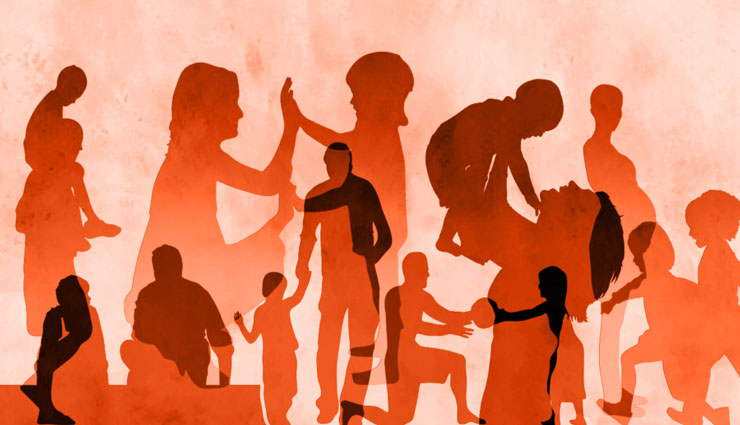Why does the child become angry and aggressive?
what causes anger issues in a child
According to clinical psychologist Dr. Howard Beth, a child’s mood swings occur when he or she cannot regulate his or her emotional motivations, leading to loss of control and disregard for past accepted behavioral norms that are out of proportion. The mood in children from the age of 18 months, which is more common, begins to decline from four, but some may even continue beyond this age range.

Why do children get moody? What makes a child angry?
Mood swings occur when a child tries to dominate their environment. It is difficult for them to change from a toddler to a child of ability. Let’s take a look at children’s mood swings.
Immature forehead cortex or PFC
The frontal cortex is the brain that regulates executive function, including social cognition, communication behavior, and moral behavior. PFC does not develop completely in children, and this can lead to anger. PFC starts growing at the age of four.
Limbic system
The limbic system attaches to the frontal cortex and is responsible for controlling key human emotions such as fear, despair, anger, and happiness. Their times are bitter, and they express their feelings intensely to meet their needs. This period of immaturity lasts more than four years.
Mood issues
One of the reasons for children’s mood swings and anger is difficulty in their mood. Rigid children do not tolerate your changes and express their feelings badly; they are more grumpy and angry than other children.
Communication method
Often the only way to communicate a toddler’s feelings is with parents because these skills do not have verbal skills. They may try to tell you that they are hungry, frustrated, tired and upset, and so on.
Pay attention to the needs.
The child may try to express his need through other symptoms, but when you can not get his attention or understand them, they resort to mood swings to get your attention.
Rigorous parents
If you are strict and do not let the child try, learn and make mistakes, the house’s atmosphere will suffocate. They show their frustration through mood swings.
Disappointment
Learning new skills such as tying shoes or adjusting a book can create feelings of helplessness, failure, helplessness, and ultimately anger.

External factors
Children over the age of three are expected to behave well in most situations, such as in the classroom, outside, or as adults. After holding them high, they often separate when they return home.
Home and family
Any situation at home that causes parental anxiety, such as marital incompatibility, divorce, or illness, can affect the child; At the same time, these are the main reasons, but certain circumstances can make children angry.
Factors affecting children’s anger and aggression:
Pain and discomfort
Children may vent their anger in difficult situations such as crowded environments with unfamiliar faces.
Confusion about the exact answer
Children get upset when their parents do not understand their symptoms and behavior. Children with more than one guardian are more likely to struggle with their parents, and other caregivers may react differently to their outbursts.
Inability to explain
When a child cannot say what he or she wants to say, he or she feels powerless and may have bitter moments to relieve his or her discomfort.
The best parenting solutions and behaviors to control and deal with an angry and aggression child:
The best way to deal with a child’s mood swings is to be calm, and only then can you think about your next step. Now how can you cope with a child’s mood swings? With time and experience, you will learn how to control your child in a critical situation. You can also follow the tips below:
Do not notice
Try to divert your attention from him, this way, you do not want to react to his rudeness, but this does not work in certain situations where the child hurts himself or is sometimes bitter.
be calm
Do this at home, because relaxation is not easy and requires a lot of effort and patience. Suggest a few options that they may like. Having a choice can calm children down quickly.

Try to understand the reactions.
As your child tries to communicate with you, try to understand what he or she is saying. Ask them a few questions to make it easier for them to say. This will reduce their frustration and calm them down.
Do not stop your baby’s tears.
If your baby cries, it will be painful to see them, but do not always stop them. Crying triggers the release of stress hormones, and Your baby may feel better at this stage.
Please do not overdo it
The child must learn that the home is a refuge where he can express his feelings without worry, and you as parents must support him.
If you get angry, apologize.
If you get angry, you will apologize like this, “Your mother is sorry, I reacted too much; your child should know that everyone is wrong and this is not a problem.
Be strong
Apologizing or regretting does not mean agreeing to their demands. If the child wants something that should not be given to him, keep your power. Tell them you will not move when you say no.
Try to communicate
Your child may not really accept you and express their anger about it, so do not judge your child by your behavior or upset him or her. Communicating with them is a useful way to relieve stress.
Give them several choices.
Give your child several options and tell him which one he likes best. You can try food options. The games they want to play or the activities they want to do. This way, your child will feel that his or her choices have been taken into account and not lost.
Sign language may help you.
Try to teach him to speak. Instead of crying for what they want, they can use sign language to communicate with you. This simple step can greatly prevent mood swings.
What causes severe mood swings?
If your child’s mood swings are severe, this could indicate a major health problem. Researchers at the University of Washington School of Medicine have linked this to some long-term, recurrent, or self-destructive mental illness:
Researchers have found that mood swings in children are shorter than in children with depression and disorders such as Attention Deficit Hyperactivity Disorder (ODD). Studies have shown that it takes 10 to 11 minutes in healthy children, while on average, it takes more than 25 minutes for children with malignant disorders.
Previous studies have called mood swings “early childhood OCD.” They also found that very aggressive children had more stress and anxiety than other children. You have difficulty dealing with such difficulties and should seek professional help.

When should I see a doctor?
See your doctor in the following cases:
- During a bitter hour, the child reacts sharply to parents or caregivers and things like toys.
- He deliberately hurts himself, bites, and bangs his head against the wall.
- Seizures last more than 25 minutes, or the child has seizures more than five times a day.
- After the bitter times are over, the child is still unable to calm down.
- It would help if you always bribed him to calm down.
- Do not hesitate to see a doctor if necessary. Remember, a behavioral disorder is as natural as a physical health problem and needs attention.
- On the other hand, if your toddler is trying to get your attention and communicating with him through mood swings, be patient; this stage will end soon.










